#mariammagsi
Text




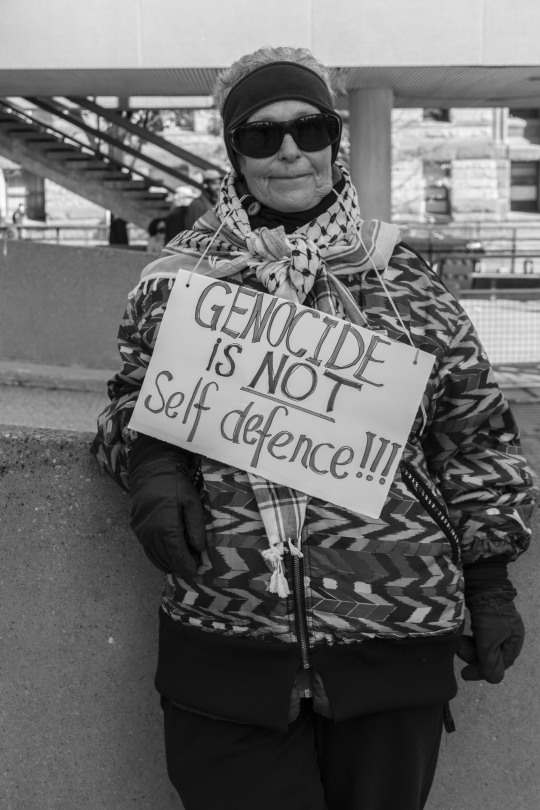













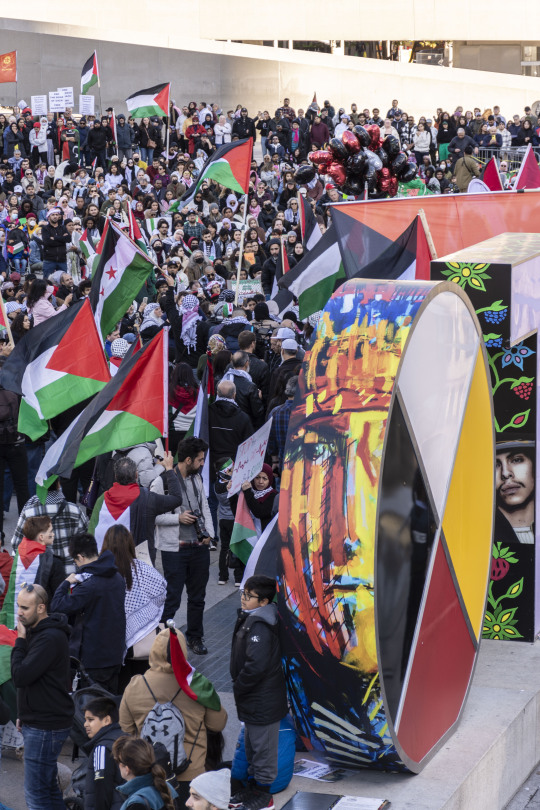

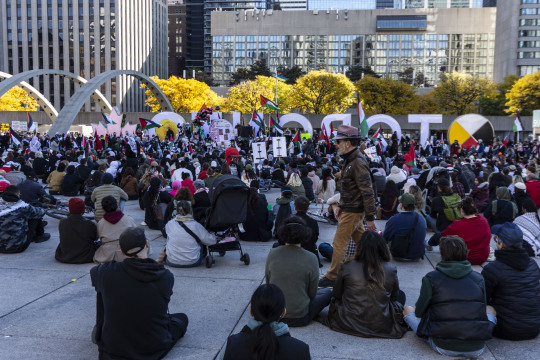


Photos © Mariam Magsi, 2023
Don’t let mainstream media deceive you. Our protests are in the thousands. The growing wave of rallies, demonstrations, and sit-ins across Canada and the USA is a prime example of why we must be critical consumers of news. Contrary to what some sources may lead you to believe, these gatherings are not limited to “hundreds” or “dozens.” We are out here in the thousands and thousands, and our message is clear: CEASEFIRE NOW!
We are raising our voices against the backdrop of personal violence, societal violence, and intergenerational traumas that have scarred our communities. These traumas are the legacy of occupations, forced migrations, displacements, violence, colonization, and war. We carry the weight of our ancestors who served in militaries and we have endured cycles of violence at home.
We recognize that we have no control over the events that shaped our history. However, we firmly believe that we can shape the now, and this present moment holds the power to create a better tomorrow. As we protest and make our voices heard, we do so with the intention of leaving behind a planet that is a gift, rather than a burden, to our descendants. We envision a future where the scars of the past can heal and where cycles of violence can be broken.
Action Items-:
Donate for urgent aid to Gaza-:
*Islamic Relief Canada (Zakat accepted)
*Palestine Children’s Relief Fund (PCRF)
*Medical Aid for Palestine (MAP)
Write to federal and provincial leaders-:
*Prime Minister Justin Trudeau
[email protected]
*Foreign Minister Mèlanie Joly
[email protected]
*Toronto Palestine Film Festival has compiled a list of restaurants, shops and businesses we can support at this time: tpff.ca/resources
#Toronto4Palestine#Gaza#FreePalestine#Canada#TorontoLovesPalestine#protest#rally#demonstration#mariammagsi#civil disobedience#raise your voice
6 notes
·
View notes
Text
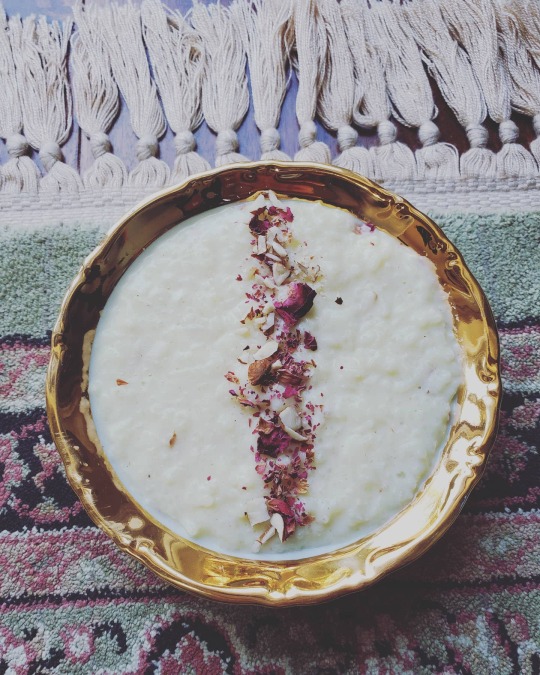
Dairy Free Kheer by Sheniz
We are days away from the book launch of "Cooking Up Feminism" and right in the midst of welcoming Spring with Nowruz (Persian New Year) and Ramzan | Ramadan, 2023. Let's celebrate with a beautiful bowl of Kheer. I invited Nature Artist and Poet, Sheniz Janmohamed - who has guest-facilitated for "Cooking Up Feminism" - to submit her dairy-free recipe of this beloved sweet dish, enjoyed in a variety of unique ways in countries across South Asia.
When I was growing up, kheer (Indian rice pudding) was my favourite dessert. While it wasn’t a dessert we made at home, it was one I always ordered when we went out for special meals or occasions. There was something about the first spoonful of rich, creamy kheer that enlivened all my senses and awakened the nostalgia of my ancestral homeland— India. When I switched over to non-dairy alternatives, I missed the familiarity and decadence of kheer. It was during one of the silent retreats with my Teacher that I was introduced to a healthier, vegan version of rice pudding, singing with notes of cinnamon.

Dairy Free Kheer by Sheniz
During the pandemic, I’d make myself warm bowls of kheer, sit by the window and watch chickadees flit about the trees. It was a small comfort on long, dark days of uncertainty. It brought me back home, and hugged me in the reminder that even though I felt alone, I wasn’t. I had the recipes of my ancestors and teachers at my very fingertips. ~ Sheniz
Ingredients:
1 cup of basmati rice
1 cup of unsweetened oat milk
2-3 tbs of honey or agave syrup
1 tsp of vanilla extract
3-5 stems of saffron
1 tbs of cardamom powder
1 tbs of rosewater
A sprinkle of cinnamon
A sprinkle of nutmeg
Garnish:
2 tsps of slivered almonds or pistachios
1 tsp of edible rose petals
Steps:
Soak a cup of basmati rice for about 10 minutes. Rinse it of stones and husks.
Boil rice and strain, setting aside for later.
Heat a cup of oat milk in a pot on medium heat until it begins to simmer.
Swirl in 2 tablespoons of honey or agave syrup. Add according to your sweet tooth :)
Scatter in 3 - 5 stems of saffron and stir until the mixture turns a pale golden hue.
Add in 1 tablespoon of cardamom powder.
Sprinkle in cinnamon and nutmeg.
Swirl in a teaspoon of vanilla extract.
Add rice and lower temperature to medium.
Stir gently until it achieves the consistency and taste you like— you can add in more milk or hot water if you want it runnier.
Gently stir in one tablespoon of rosewater before garnishing— rosewater tends to get lost in cooking, so it’s best to add at the last stage before serving.
Garnish with crushed edible rose petals and nuts, then serve.
Thank you for sharing this wonderful, sweet recipe with our community, Sheniz! Stay tuned as we launch "Cooking Up Feminism" in book form on March 25th, 2023.
#Cooking Up Feminism#Healthy Arts for Seniors#Scarborough Arts#Scarborough#Toronto#Canada#Ontario#ShenizJanmohamed#mariammagsi#poetry#art#food#writing#blog#south asia#india#indian kheer
3 notes
·
View notes
Photo

Wear a mask.
Wash your hands.
Practice physical distancing.
#mariammagsi#purdah#burqa#photography#visualart#artactivism#publicservice#PSA#COVID19#pandemic#canada#ontario#toronto#traditionalculturalgarments#contemporaryart#colour#artists
134 notes
·
View notes
Text
Lota Power
Some years ago a British friend stopped by for a visit. After we finished our dinner, he proceeded to excuse himself to use the washroom. Some time lapsed, and he emerged scratching his head, utterly confused, as if he had seen a hippopotamus in there.
“Mariam!”
“Yes?”
“Can I ask you something? I hope you won’t think I’m being rude.”
“Ok. Sure. Go ahead.”
“I don’t see any plants anywhere. I’ve looked and looked, really. I can’t for the life of me understand why you have this watering can in there?”
I threw my head back in laughter. My dear friend was holding a Lota.

Image 1: A sturdy, long-lasting, beautifully crafted, stainless steel Lota. This Lota offers a functional facilitation of toilet hygiene, as seen in South Asian toilet customs, while also serving an aesthetic purpose. I inherited this Lota from my mother. This Lota was made in Pakistan and has made a migratory journey to Canada. This Lota offers a sustainable way of using the toilet. The Lota, if used worldwide, could reduce our toilet paper imprint on the planet. Image © Mariam Magsi 2021
The Lota is a rounded vessel with a spout predominantly found in South Asian toilets in Pakistan and India, as well as other Asian countries, albeit in different shapes, varieties and forms. It can be made using a myriad of materials such as plastic and/or stainless steel. The Lota is used to wash the privates, both front and back, and is an integral component of toilet hygiene customs in the Indian subcontinent and also amidst the diaspora. Of the versatile uses of the Lota, I have also seen it being used as a watering vessel for small plants, since the pour of the water is soft and mindful.
I exhausted my resources looking for peer-reviewed journals on the Lota through my institution’s archives. Research yielded a Lota de Macedo Soares in a countryside near Samambaia in “The Burglar of the Tower of Babel,” but it seems like the tower lacked South Asian toilet hygiene customs. The Lota was not to be found there. I found a Lota in The Journal of Parasitology, but instead of a vessel, I believe they were referencing a freshwater fish from the lota lota genus. There’s a suburb in the city of Brisbane, Queensland, Australia named Lota. A quick Wikipedia search describes the Lota as a vessel that can be found in the Indian subcontinent as far back as the 2nd millenium BC, and it not only informed personal hygiene customs and rituals, but variations of the Lota, made with brass, copper, and other materials, were extensively used in prayers, sacred rituals and communal ceremonies. We must thank the Chalcolithic period cultures of South Asia for gifting the world this beautiful vessel that continues to serve purpose and function in South Asian homes within the subcontinent and across the world, a testament to the obstinance of South Asian culture to submit to the British Empire. The Lota survived, fought, overcame and outlived British rule. The Lota escaped colonization, and continues to do so.
Image 1 is a visual reference of the importance of how these objects are tied in with familial bonding, ancestral lineage and private, unseen, invisible attempts at decolonizing bathroom culture, while remaining rooted to the hygiene customs of our subcontinent’s ancestors. My mother taught me how to use the Lota through practical hygiene demonstrations, solidifying my internal knowledge systems with a specific set of toilet hygiene customs and rituals, that were transmitted to her through her mother, who was taught by her mother, creating a long intergenerational legacy of Lota power.
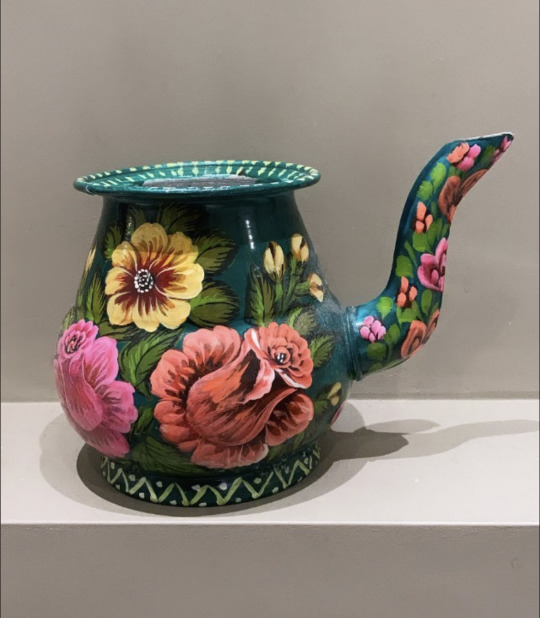
Image 2: This Lota belongs to my maternal cousin, Adeela. It was made in Pakistan and migrated to the UK. Her husband, Fassi suggested using it as a plantar, which is such a lovely idea, but Adeela rightfully claimed it for herself. In her words: “No! I want a pretty Lota washing my butt.” The design you see on the surface of this Lota is inspired by Truck Art which is an entire industry of its own in South Asia. This Lota was purchased from Zainab Market in Karachi, Pakistan. Image © Adeela Badshah
My mother didn’t only teach me how to use the Lota, but also emphasized, through practice, that this important component of toilet hygiene was an integral part of our faith. While a wide array of religions, ideologies, belief systems, cultural customs, hierarchies, and laws can be found in South Asia, one can access some form of the Lota, or the other, in mosques, temples, churches, schools, public washrooms etc. A common, daily life practice, that unites billions across the globe, irrespective of class, ethnic background and gender. Having visited Muslim, Hindu, Christian and Zoarastrian homes in Pakistan, I have always had access to the Lota, a symbol of a private act that signifies our unity. Those lucky enough to be our lovers, close friends and non-desi kin and chosen family gain entry into this special community of humans on the planet. My husband swears by the Lota after discovering its vast benefits and unbeatable squeaky clean results. #LotaPower
I initially posted Image 1 on Instagram and received an enthusiastic response from friends and family. A fellow South Asian migrant friend, with roots in India, shared a wonderful memory of how in her family, the vessel used, was called, a Mug. This is an interesting cultural overlap, because at our family residence in Karachi, Pakistan, buckets with plastic “Mugs” are placed in all spaces reserved for bathing. My mother would refer to them as “Mugs” as well, and sometimes, when she seamlessly transitioned from English to Urdu to Punjabi, she would say “Mugga.” She bathed her whole life, seated on a stool, with a bucket of water and a Mug. Through this method of bathing, she was able to conserve more water, which would otherwise be wasted in a stand up shower.
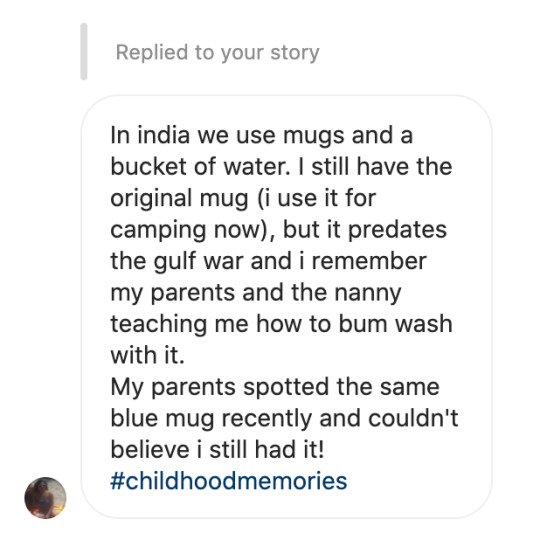
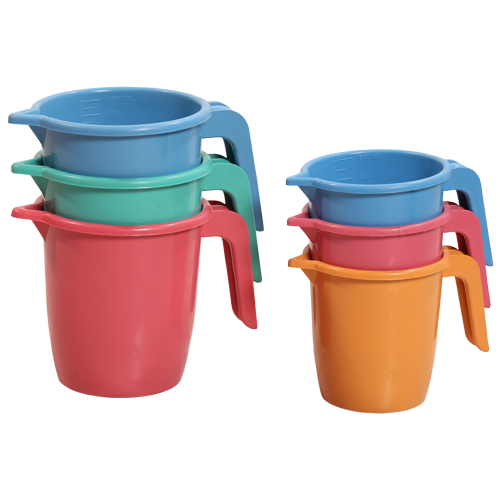
Image 3: Plastic bathing mugs © ebay
I have never quite been able to assimilate to North American toilet hygiene norms. While bidets and hand-held Muslim showers can be found in bathrooms in Europe and the Middle East, they’ve certainly not taken off as a mainstream practice in North America.

Image 4: The other side of the Lota featured in Image 2 has this gorgeous peacock painted on the surface floating through a lush, green garden on a carpet of vibrant roses. The artwork on the Lota tells a story, and transports the viewer and the user to an imaginative world filled with possibility. Image © Adeela Badshah
I often carry an extra bottle of water when I visit non-desi homes and public spaces in case I have to use the toilet. I’ve introduced the Lota to several Canadian families, many of whom have adopted the practice as a welcome new addition to their daily toilet hygiene. My friends and chosen family members often make arrangements for a Lota in their washrooms when I visit their homes, particularly those who know me well, and are familiar with the customs I value. I do appreciate these kind, inclusive, mutually beneficial gestures.
I came across an awesome work of art by Pakistani illustrator, Samya Arif, featuring a portable, collapsable Lota: https://gotalota.com/ - If you sign up on their website you’ll get a light-hearted, humorous newsletter, which is a total bonus. Where was this genius invention during my now retired raving days?

Image 5: Artwork for Gotalota by Samya Arif: https://www.samyaarif.com/
Recently, I have also seen companies like Tushy advertising easy to attach bidets. Though I could just as easily install bidets or hand-held Muslim showers in my bathroom, I prefer the traditional Lota method of my ancestors. This practice keeps me grounded to home, connected with my desi roots, carrying forward a wise and sustainable method of hygiene that has benefitted members of my community for centuries. May the #LotaPower be with you.

Image 6: Plastic milk pitcher milk bag holder © shopperplus.ca - A true rite of passage for all desi migrants to Canada. What a lifesaver!
Notes-:
History of Lota: https://en.wikipedia.org/wiki/Lota_(vessel)
Lota at the MET: https://www.metmuseum.org/art/collection/search/444557
Gota Lota: https://gotalota.com/
Samya Arif: https://www.samyaarif.com/Album-Art
Tushy: https://hellotushy.com
Journal of Parasitology: The Effect of Echinorhynchus borealis (Acanthocephala) Infection on the Anti-Predator Behavior of a Benthic Amphipod
Burbot (lota lota) : https://en.wikipedia.org/wiki/Burbot
Lota, Australia: https://en.wikipedia.org/wiki/Lota,_Queensland
Plastic Milk Pitcher: https://www.living.ca/p-369932-lvc-rs2000-milk-pitcher
Conversations with loved ones around the world <3
#LotaPower#lota#squakyclean#dawatyanproject#dawat#invitation#culture#custom#asia#southasia#mariammagsi#canada#art#photography#contemporaryart#dialogue#share#crossborder
4 notes
·
View notes
Photo

Artist: @mariam_magsi #mariammagsi Artwork: The Registry 10'×4' Vinyl Print Portfolio: www.mariammagsi.com _________________________ To create a directory of female Pakistani artists and to promote the work of female Pakistani artists.Tag us or dm us for a feature #khatoonartsociety Join us on Facebook: Khatoon Arts Society
0 notes
Text



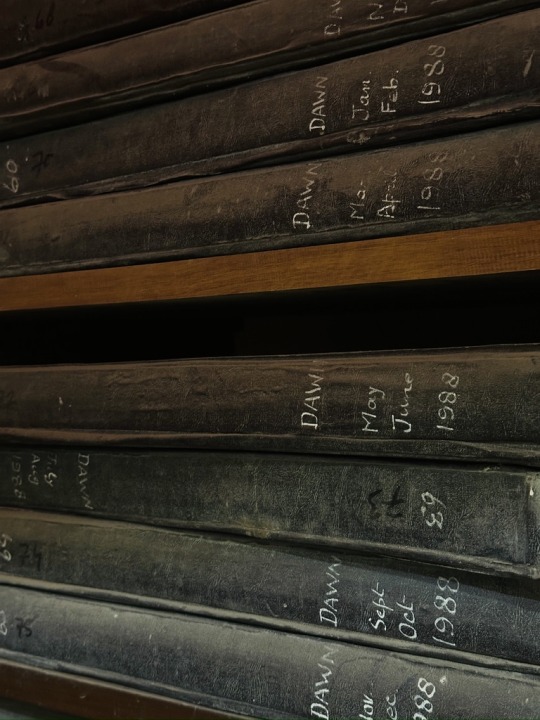


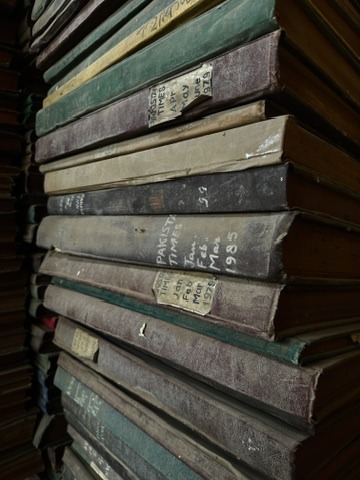
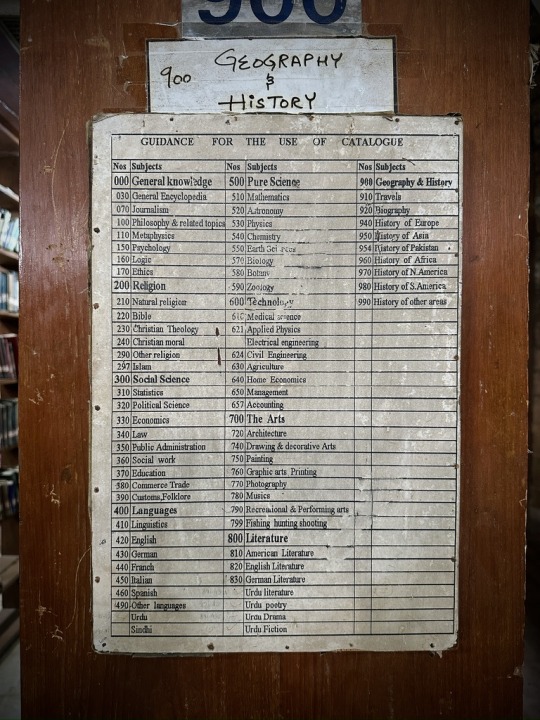




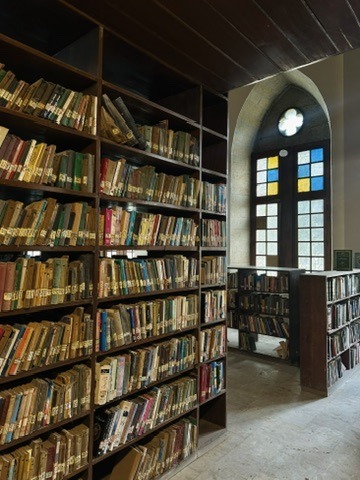



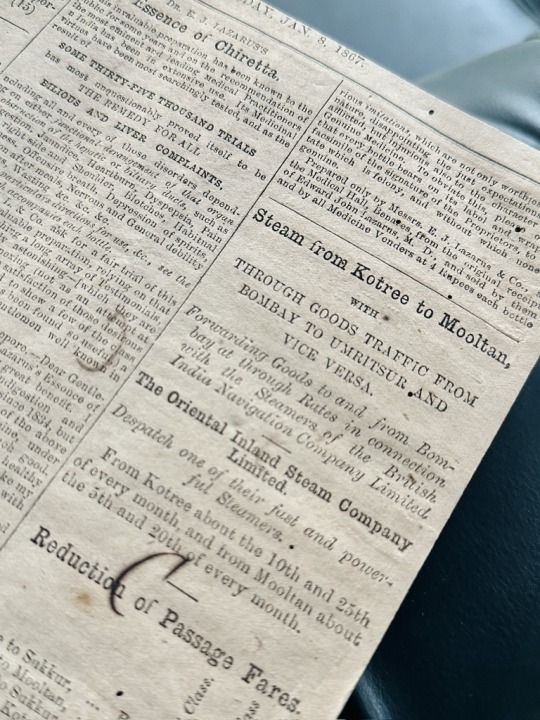
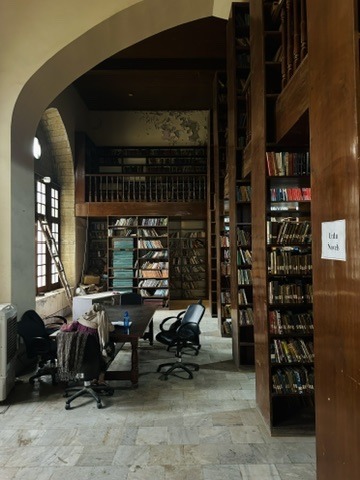

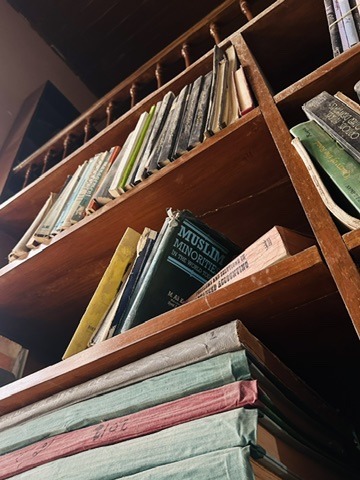




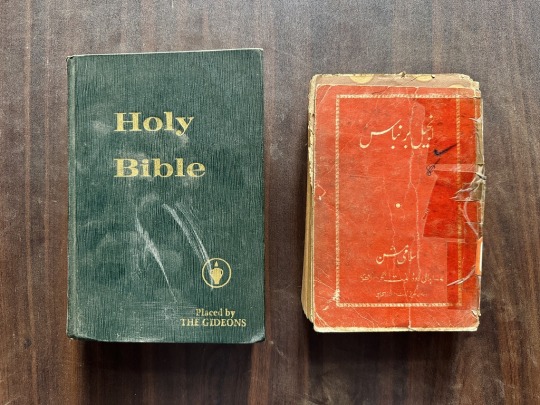



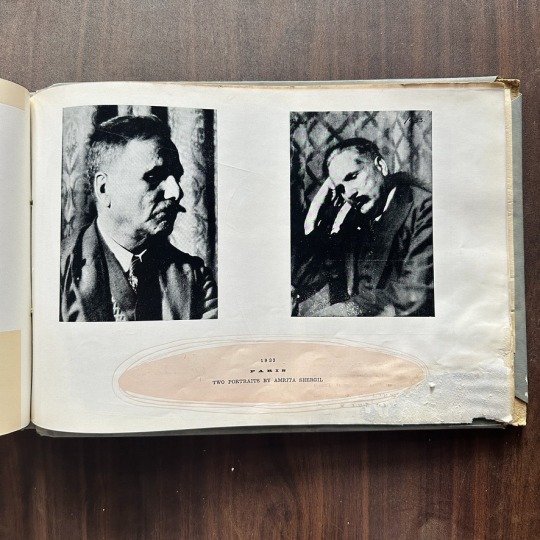

The scent of old paper is the ideal perfume for the bibliophiles soul.
Location: Frere Hall, Karachi
© Mariam Magsi 2024
#library#bibliophile#books#Frere Hall#pakistan#sindh#heritage#culture#South Asia#travel#explore#mariammagsi
2 notes
·
View notes
Photo

Detour to the Stars.
© Mariam Magsi, 2022
I got lost and took a detour even though the sign said “no road ahead.” A bumpy ride led to the middle of a farm. Dead silence. Crickets. Cows gently mooing themselves to sleep. Rural darkness as far as the eyes could see. And then, I looked up and gasped in wonder. To the stars I was nothing but a mere dot below, far across the distance. In isolation and silence, I felt completely interconnected with the universe.
I am building my gear gradually, and don’t have the appropriate lenses for astronomical observation. It is difficult to document the night sky, nevertheless I pushed my beloved wide angle 12-24 to the max despite the blur and pixelation. F/4.0, ISO 3200, Exposed for 30 seconds. I highly recommend using a tripod and a remote trigger to avoid even the slightest of vibrations when photographing night skies. This photograph took several attempts, but I didn’t give up until I attained the shot that did a semblance of justice to the magnificent sky.
#stars#mariam magsi#mariammagsi#sky#nasa#universe#galaxy#nature#photography#night photography#long exposure#glitter#planet earth#women photograph#women photographers#Nikon#Nikon Photographers
10 notes
·
View notes
Photo
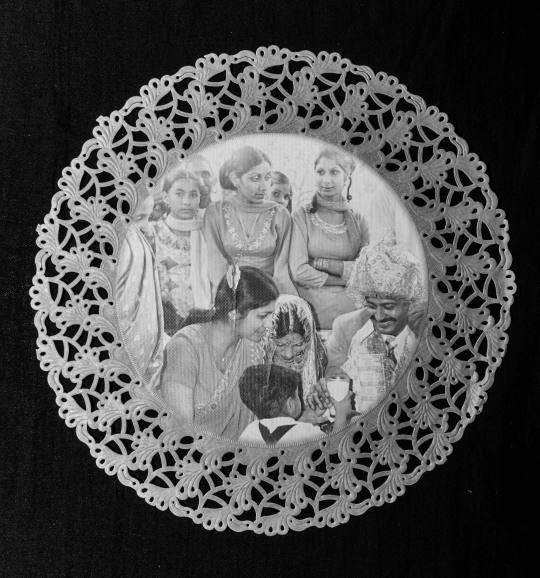
The Persistence of Memory
Digital transfers of vintage photographs (1976) on doilies (1986) installed on a black chadar (veil) belonging to the artist’s late mother. 2022
Borrowing from Salvador Dali’s surrealist ideas around space, time and memory, Mariam Magsi creates a series of digital photo transfers onto doilies. Doilies are ornamental mats, usually in varying shades of white, made of lace, fabric or paper with a lace pattern, typically placed on a plate under cakes or other sweet foods and savoury pastries. The word doily comes from Doiley, the last name of a reputable and well-known Londoner, who dealt with dry food trades in the 17th century. The texture of the doilies bleeds into the image, merging with the texture of the vintage, analogue photographs, printed in Lahore, Pakistan back in 1976. The photograph portrays a wedding banquet in Punjab featuring the maternal family of the artist. The bride and groom are seated, partaking in rituals and customs conducive to marriage. A young child proceeds to present a glass of milk to the groom first.
The generation featured inherited a brand new country and identity, unprocessed and unimaginably violent trauma, fuelled by nationalism, along with pressures to preserve culture, prevent erasure, and always, at all costs, perform hospitality, so as to avoid being perceived as a failed citizen. This photograph was made 29 years after Pakistan was formed, in a violent partition with India, puppeteered by the British in collaboration with the Indian subcontinent’s political elite. Only 6 years before this banquet was recorded, Bangladesh declared its independence from Pakistan in 1971. A tear in the photograph transfers onto the doily, echoing gaps in history. The doily is taken out of its original function and serves as a spherical light-box illuminating the otherwise fading black and white photograph. Due to the dark nature of the chadar (veil) upon which the work lies, it is not clear if the doily is on the ground, installed on the wall, or presented on a table.
The Persistence of Memory was commissioned by the Dawat Yan Banquet with support from the AGOxRBC Artists in Residence Program, 2022.
#mariammagsi#blackandwhite#doiley#photography#archives#lensbased#digital photography#digital transfer#dawat yan#art gallery of ontario#photo work#art#contemporary art#disrupt the archives#memory#history#pakistan#india#bangladesh#south asia#colonialism#partition
7 notes
·
View notes
Text
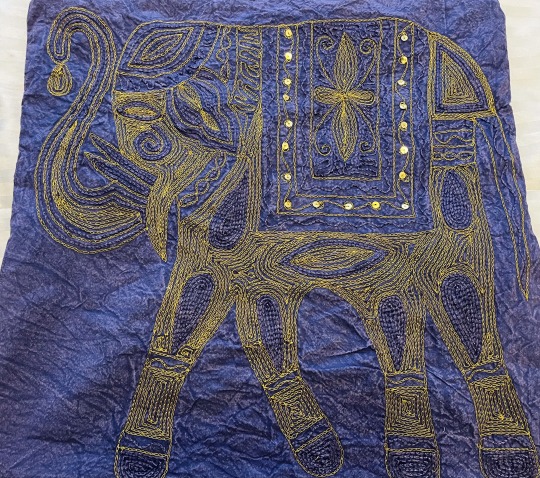
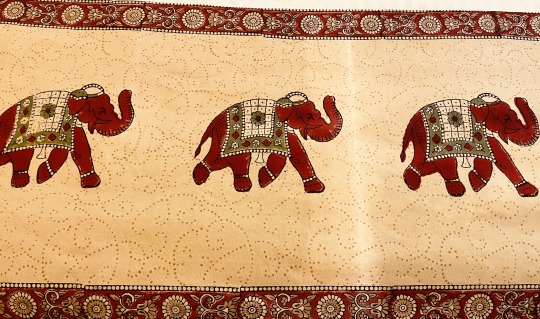
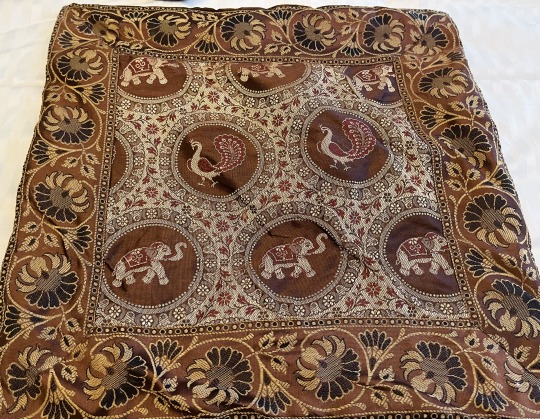
Spirit Animals by Zeni
"My grandmother's from India. Part of my grandfather's family is from Persia. From a very young age, I saw some very beautiful objects and items in their home, that a lot of people may not have been exposed to. My grandmother and grandfather always had peacocks. Their blend of Indian and Persian had so many things in their home like cushion covers with both elephants and peacocks embroidered on them. There's definitely a desire in us to see the world."
This week for "Cooking Up Feminism" at Scarborough Arts, workshop participant, Zeni brought some wonderful, hand embroidered and block printed textiles to share with our group. I noticed a recurring theme of elephants in the designs of the fabrics, which made me very happy, because elephants are my spirit animals. They are majestic, gentle yet fierce, protective of their herd, and have their large feet firmly planted on the ground.
"First of all, I just wanted to share why elephants are so special to me," Zeni said, as we circulated through the unique fabrics. "Elephants are special to me, because in my opinion, they are like human beings. They go through a lot of things. They survive. And they still care for their upcoming generations.
When my grandson was born, I created a book titled Little One, You are the Universe. It centres around elephants and all of the text and illustrations are mine." Zeni (Workshop Participant, Cooking Up Feminism)
All of the recipes and stories we share in "Cooking Up Feminism" will be published in a unique cookbook by Scarborough Arts, available to the public in 2023, so stay tuned. Bookmark our blog and follow along. Thank you for your support.
~Mariam Magsi (Workshop Facilitator, Scarborough Arts)
#Cooking Up Feminism#Scarborough Arts#Healthy Arts for Seniors#elephants#spirit animals#strength#courage#life#animal inspiration#show and tell#community#friendship#scarborough#canada#BIPOC#seniors#community health#mariammagsi#storytelling
2 notes
·
View notes
Text

African Coconut Shredder by Zeni
Virtual programming has many unique advantages, such as the ability to show and tell a variety of items that we may have in our home. During one of our "Cooking Up Feminism" sessions on Curry, Zeni asked us to "hang on, I want to show you all something." We were waiting in anticipation, curious about what Zeni was going to show us. She returned to the workshop holding a large object in her hand, that many of us were unable to recognize or identify, as we hadn't encountered it prior to this moment. She excitedly held it up to the screen so we could all take a good look.
"This is a shredder made with wood. It has brass knobs, with a blade at the end. So you put the coconut shell on this and grate it. I really wanted to buy this in Zanzibar, but my husband was concerned about bringing it over through Canadian customs. Well, two weeks ago, a lady gifted it to me. I really wanted it and now look, I have it." For an added layer of accessibility to the object, and because we were all curious to see it further up close, Zeni sent a beautiful photo to our group, so we could all enjoy the aesthetic quality and craftsmanship of this uniquely ornamented coconut shredder.
"Wow! This is simply beautiful! Who says functional objects can't be beautiful." Ann Marie chimed in.
"I agree, in fact this looks like an object that one could even hang on the wall or display in their homes, because it's made so beautifully. I've never seen anything like it" said Lubna while admiring Zeni's generous share with our engaged and creative group.
All of the recipes and stories we share in "Cooking Up Feminism" will be published in a unique cookbook by Scarborough Arts, available to the public in 2023, so stay tuned. Bookmark our blog and follow along. Thank you for your support.
~Mariam Magsi (Workshop Facilitator, Scarborough Arts)
#cooking up feminism#scarborough arts#objects#healthy arts for seniors#BIPOC#migrant communities#canada#scarborough#ontario#mariammagsi#food#culture#storytelling#photography#learn and share
3 notes
·
View notes
Text

Flaxseed and Wheat Flour Laddoo by Madhu & her mother
"Cooking Up Feminism" participant Madhu Kumar is currently back in her motherland India for the holidays. Here, two warrior generations of empowered women, Madhu and her mother, use their hands to make Flaxseed and Wheat Flour laddoo.
"My mom is making Laddoo for me, and I am giving her a hand in the making process. I wanted to include her because we have been talking about intergenerational knowledge and how traditions are passed down, in our workshops." ~Madhu Kumar
By preserving this moment in time through photography, Madhu also eternalizes a precious bonding moment with her mother, as they honour their ancestors together.
Madhu leads a health and wellness driven life, choosing to cook in the ways of her ancestors, while keeping up all of the culinary traditions that she has inherited from the matriarchs of her family.
All of the recipes and stories we share in "Cooking Up Feminism" will be published in a unique cookbook by Scarborough Arts, available to the public in 2023, so stay tuned. Bookmark our blog and follow along. Thank you for your support.
~Mariam Magsi (Workshop Facilitator, Scarborough Arts)
#cooking up feminism#scarborough arts#healthy arts for seniors#mariammagsi#food#history#HERstory#canada#BIPOC#seniors#ontario#scarborough#workshops#photography#family#ancestry#lineage#diversity#inclusivity#travel
1 note
·
View note
Photo




“Pieces of my heart”
Broken objects, poetry, black chadar (veil), decaying plants from a bouquet gifted with love, intact memories
Images+Text © Mariam Magsi 2022
It’s hard for me
to let go
of objects
associated
with family.
Things keep breaking.
Things keep breaking.
Things keep breaking.
I store the broken shards
and chalky specks
of ancient memories
in a blue towel
underneath the bed
Hidden away from prying eyes.
Still broken, but somewhat whole.
Where I come from, they say:
Koi cheez tooti?
Bala tali
Jaldi phainko
Did something break?
An obstacle has been diverted
Discard immediately
Today, I released
the revolving pieces of the puzzle
into the darkness of my heart
Because whoever said
light is good
and dark is evil
has never floated
in the middle of the ocean
Dark
Is beautiful
Dark
Is desire
Dark
Is pure
Dark
Is love
Their faces come roaring
to the surface of the water,
sometimes
Especially on the nights
that feel heavy
but pass by
like drifting morning dew
“We’re not in these objects,
dear child!
Close your eyes.
Listen to the ferocious
beat of the drum in your chest.
We’re right there.
In the crevices of your heart!”
Image 1: A porcelain, gold-plated, hand-painted Ashtray that was acquired in France, made in Japan, in the 80s during Ammi’s global travels, while flying her way to independence, with Pakistan International Airlines.
Images 2: Glass milk pitcher that belonged to my mother.
Image 3: Tea cup gifted from my paternal aunt.
Image 4: One of the last items Ammi ever bought for me: a highly functional mug that came with a metal strainer, a lid to keep tea warm, and a mixing teaspoon. It was made in Spain, and purchased in the United Arab Emirates before traveling to Pakistan, to follow its demise in Canada.
#mariammagsi#art#poetry#grief#photography#text#mother#family#inherited objects#found objects#broken objects#sadness#loss#discomfort#heart#grief art#love#legacy#inheritance#dark poetry
2 notes
·
View notes
Text
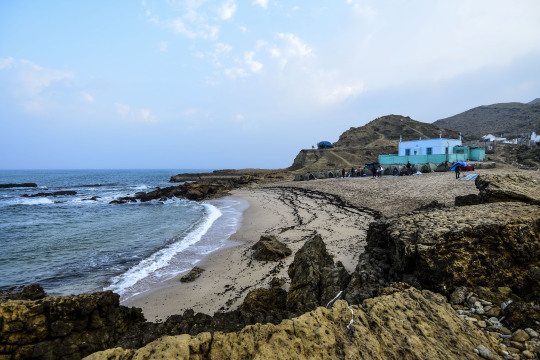




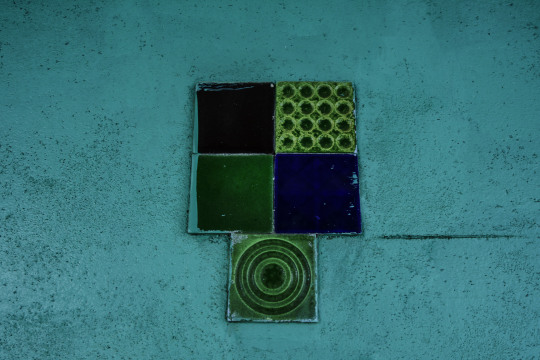

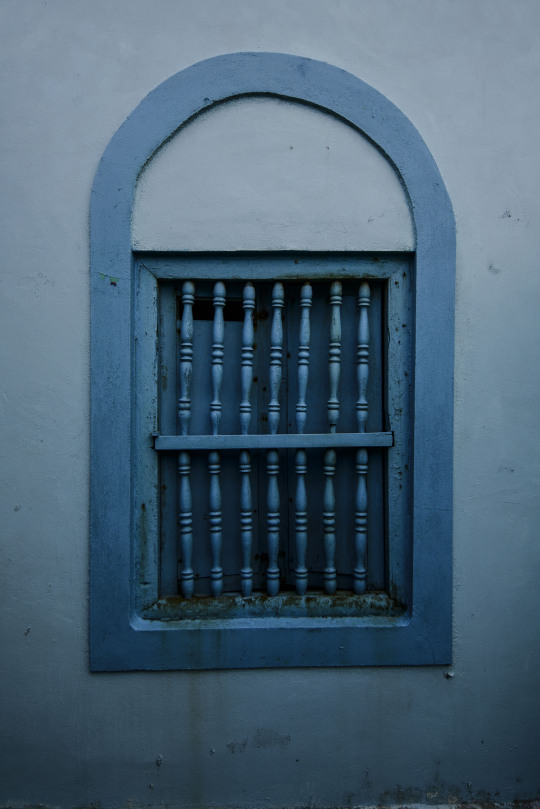







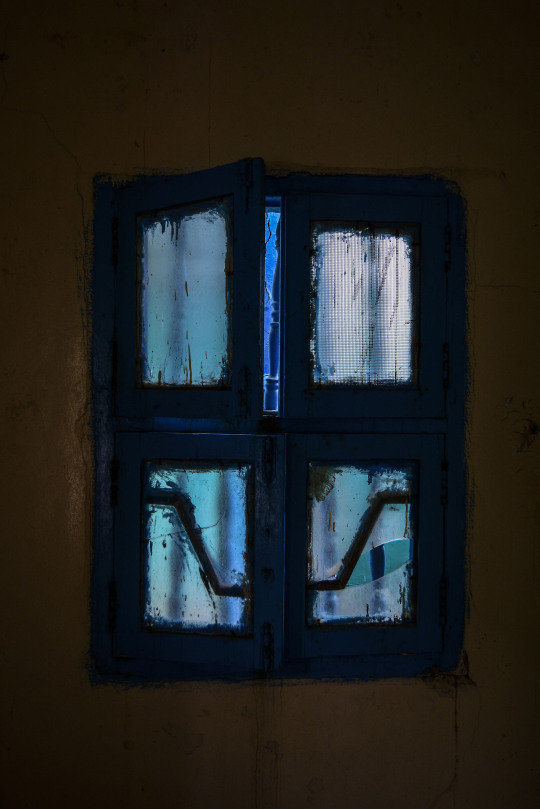
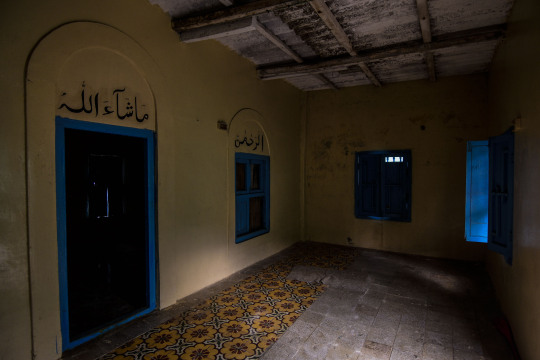

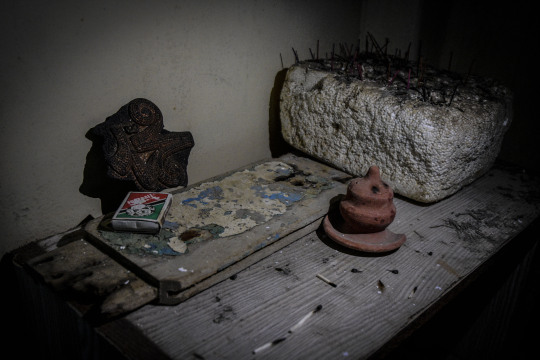

Echoes in the Abyss...
It was an unusually brisk morning when my beloved and I decided to venture into Bhit Khori, a once-thriving fishing village now surrendered to the sands of time. The deserted pathways led us to the skeletal remains of houses and boats, their stories lost to the wind. Amidst this desolate beauty, our curiosity was drawn to a haunting silhouette against the sky—an abandoned mosque.
The mosque stood solitary, its doors shut but not sealed, as if guarding the secrets of ages. Despite the eerie silence that hugged the air, our adventurous spirits couldn't resist the pull of the unknown. We pushed open the door, the wood groaning under years of neglect. Inside, the air was thick with the scent of dust and forgotten prayers.
One room led to another, each door heavier than the last, opening with a reluctant creak that echoed through the empty halls. As we delved deeper into the mosque, a startling sound broke the silence—three sharp knocks, resonating from a metallic surface. I turned, expecting to see my husband playing a trick, but the confusion in his eyes mirrored my own.
Before we could discuss it, the silence once more settled like a dense fog around us. Then, as if summoned by our presence, the knocks came again—three loud, deliberate bangs. This time, my husband stood clearly before me, his hands visibly still. The sound sliced through the stillness, leaving a trail of cold air in its wake.
We exchanged looks, a mix of fear and fascination. The knocks seemed almost like a communication—a warning, or perhaps an invitation. Compelled by a mix of dread and intrigue, we approached the final barrier, the last door that stood defiantly closed against us.
With a shared breath, we pushed it open. Darkness greeted us, thick and enveloping, swallowing the meager light from the doorway. A cold gust of wind rushed past, carrying with it a faint, almost inaudible whisper. The room was empty, save for the shadows that seemed to flicker and dance on the walls.
As our eyes adjusted, the stark emptiness became more apparent. The room felt suspended in time, a vacuum so profound that even the distant roar of the sea was silenced within its walls. We stood there, on the threshold between the known and the unknown, our hearts racing with the thrill of the unearthly encounter.
The mosque, with its closed doors and ghostly whispers, seemed to hold a narrative lost to the living, a story untold but felt in the chill of the unseen and the echo of unclaimed knocks. Was it merely the wind, or had we stumbled upon something far more ancient and mysterious, calling out from the depths of its sanctum?
As we left the mosque, the air seemed to tighten around us, as if reluctant to let go. The experience lingered with us, a haunting melody of questions without answers. Our visit to Bhit Khori was supposed to be an escape into nature, but it turned into a dance with the supernatural, leaving us to wonder if some doors, especially those guarded by the spirits of the past, are better left closed.
Back in the comfort of our home, the knocks still echo in my mind, a ghostly drumbeat that refuses to fade. What did they signify? Who, or what, was reaching out from the other side? These questions haunt me still, a chilling reminder of our eerie adventure into the spectral heart of Bhit Khori.
Images + Text: © Mariam Magsi 2024
#Balochistan#Bhit Khori#photography#mosque#supernatural#explore#ghosts#story time#mariammagsi#pakistan
0 notes
Text
Self-Healing with Mark-Making

Self-Portrait, Ann Marie, Cooking Up Community, 2023
Scarborough Arts, committed to fostering creativity and community engagement, recently collaborated with emerging artist Ann Marie to host a transformative virtual workshop. Titled "Self-Healing with Mark-Making," the workshop aimed to enhance the well-being of seniors in the Cooking Up Community program through various drawing techniques. Ann Marie's story is particularly inspiring, as she emerged from a place of self-doubt to become a confident artist and mentor. Ann Marie was initially told she lacked "an artistic bone in her body." Undeterred, Ann Marie found solace and purpose in creative expression, developing skills in drawing, crochet, photography and several other arts. Her self-confidence and self-awareness paved the way for her to not only create and exhibit her own artwork but also to share her knowledge with others.

Self-Healing with Mark-Making, Zeni Shariff, Cooking Up Community, 2023
The virtual workshop facilitated by Ann Marie focused on using drawing as a tool for self-healing. Participants, regardless of age, disability, or financial background, were generously supplied with high-quality stationery, journals, and gift cards by Scarborough Arts, ensuring that everyone had the opportunity to engage in the creative process. Ann Marie guided the seniors through a series of drawing exercises designed to reduce stress and enhance overall well-being. The use of mark-making techniques allowed participants to delve into their creative imagination, providing a respite from the challenges of daily life.

Ann Marie draws an abstract portrait of Cooking Up Community facilitator, Mariam Magsi, 2023
Inviting program participants like Ann Marie to lead workshops offers numerous benefits. It expands the artist's network, fosters social connections, and brings visibility to their artistic practice. More importantly, it provides a new stream of income for practitioners who may have faced barriers in the traditional art world. The feedback from workshop participants was overwhelmingly positive. Many expressed feeling less stressed after completing their artwork and highlighted the therapeutic benefits of engaging in the creative process. The session not only offered a break from their daily challenges but also provided a sense of accomplishment as they proudly displayed their creations at the end of the workshop. Lisa from our workshop not only created a remarkable work of art guided by Ann Marie's successful prompts, but also shared paintings she created with her daughter, forging intergenerational bonds through art-making.


Paintings by Lisa, Cooking Up Community, 2023
Scarborough Arts, through initiatives like the Cooking Up Community program, continues to champion the transformative power of art. Ann Marie's journey from a place of self-doubt to becoming a creative mentor exemplifies the positive impact of providing opportunities for emerging artists to share their skills. The "Self-Healing with Mark-Making" workshop not only benefited the participants but also showcased the potential for creative expression to foster resilience, self-discovery, and community connection.
About Ann Marie-:
Emerging Canadian artist Ann Marie Leon has been showcased at the Textile Museum of Canada, The Riverdale Hub and several Toronto museums as part of the Women of Strength exhibit through Culture Link & the City of Toronto. A lifelong learner, Ann Marie has studied business, art history, modern art, cake decorating and photography. She has participated in numerous workshops including rug making, mixed-media art, weaving, paper craft, embroidery, flower arranging & painting. AnnMarie is a skilled knitter and crocheter having learned from her mother and grandmother. Ann-Marie is a mother, business woman, educator, artist and passionate advocate for mental health & wellness which is central to her work. Having begun her art journey at an older age, she is interested in exploring herself and her relationship to the world through art. Through the lens of my experience as a woman, immigrant & visible minority I am uniquely qualified to express in a manner not typically represented in mainstream art. ~ Ann Marie
#cooking up community#scarborough arts#mark making#self healing#drawing is therapy#stress management#mental health#mariammagsi#scarborough
0 notes
Text
Building a Legacy of Love: Exploring Memories through Objects

Ann Marie is soaking dried fruits for Jamaican Christmas Rum Cakes, Cooking Up Community, 2023
The art of preserving memories has taken on a poignant significance in our Cooking Up Community workshops, under the Healthy Arts for Seniors program at Scarborough Arts. In these workshops, participants have been courageously delving into the emotional process of documenting objects that once belonged to their departed family members. These tangible artifacts, infused with love, tradition, and sentiment, serve as a way to keep the spirit, legacy, and memory of their loved ones alive. This endeavour invites us to embrace grief, loss, and sadness as integral parts of our human experience and reminds us that, through love, we can continue to honour and celebrate the lives of those who are no longer with us in physical form.
Ann Marie, a regular attendee in our workshop programs, shared a touching story through her photographs. One of the objects she chose to document was a jar filled with dried fruits soaked in port wine and Jamaican Rum. This jar represents a treasured family tradition - the preparation of Jamaican Christmas Rum cakes. Ann Marie and her sisters begin soaking the fruits during the summer months, following a timeless family recipe. When Christmas arrives, they come together in their kitchens to bake these delectable cakes for their family gatherings. These traditions, passed down through generations, are invaluable. By recording and archiving these recipes and moments, Ann Marie is ensuring that the younger generations in her family will carry on their culinary legacy and connect with their loved ones.

Wendy's father made these shoes by hand, and later mended them. He painted the stone in an art class with the Alzheimer's Society, Cooking Up Community, 2023
Wendy's photographs showcase her father's belongings, offering a poignant glimpse into the life of a generation that was deeply resourceful and self-sufficient. Among the objects is a pair of wooden slippers that her father cleverly crafted and mended himself. Wendy also shared a stone that her father painted during art classes with the Alzheimer's Society. These objects reflect an era when recycling, repurposing, and reusing were a way of life, long before there was even language for these Earth saving acts.

Wendy was surprised to find batteries and cardboard in an old bike light, igniting a wonderful, warm and loving memory of her father's concern for her, Cooking Up Community, 2023
One photograph that touched everyone deeply was a simple light that Wendy had intended for night bike riding. When she checked the batteries, she discovered that her father had placed not just batteries but also some cardboard inside the light to fit the batteries, to ensure she had light on her bike. This thoughtful gesture embodies her father's love and concern for her, showing us that the legacy of love transcends even the physical world.

Subverting function, from frame to table by Ebru, Cooking Up Community, 2023
Ebru shared a photograph of a floral plate, subverting the object's ceremonial purpose. The plate was originally gifted to her father-in-law in 1989 as a decorative item to hang on the wall. While the family had contemplated giving it away, Ebru recognized its beauty and took it into her own home. She removed it from the frame and began using it functionally to serve food. In her photograph, she added a candle, creating a poetic gesture to remind us of the ephemerality and fleeting nature of life. Even when our loved ones depart, they leave us with light and warmth in the form of cherished memories.
Through the Cooking Up Community workshops under the Healthy Arts for Seniors program at Scarborough Arts, participants have embarked on a beautiful journey of remembrance these past two weeks. The documented objects, laden with memories and stories, serve as bridges between generations and offer a comforting way to navigate the complexities of grief and loss. By sharing these stories, we not only honour our loved ones but also inspire others to embrace the legacy of love and traditions they have left behind. In this space of shared memories, we find solace, connection, and the everlasting warmth of the love we hold in our hearts.
#cooking up community#healthy arts for seniors#scarborough arts#canada#ontario#family#objects#legacy#inheritance#love#memory#community#mariammagsi#photography#art#creativity#loss#grief#mourning
1 note
·
View note
Text

"This market felt like home" by Zeni, Cooking Up Community 2023
This week of October provided a unique initiative that encouraged participants to explore the deep emotional connection they have with objects of significance. Artists who work with inherited and found objects, such as Alexandra Majerus and Andrea Tasa were also presented to generate fresh, new ideas.
Cooking Up Community participants gathered to reflect on their cherished items and the emotional stories that came with them. As the group shared their experiences, the conversation shifted between stories of loss and hope. One standout participant, Irene, opened up about a profound personal loss that she had endured. Her story touched the hearts of everyone present, reminding us all of the power of healing, resilience and strength.
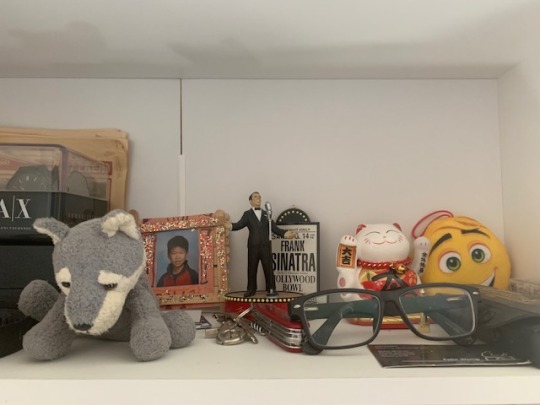
Irene's son's belongings in their home, Cooking Up Community, 2023
Armed with her mirrorless camera on loan from Scarborough Arts, Josephine embarked on outdoor adventures and documented her experiences. These trips turned into opportunities for her to connect with her friends, creating new and lasting memories. One particular outdoor adventure that Josephine embarked on was her visit to the breathtaking Bluffs in Scarborough. Her photographs of this natural wonder were nothing short of breathtaking. By positioning herself in close proximity to the Bluffs, she managed to capture the scale and majesty of the cliffs in a way that left everyone in awe. Her images, in many ways, served as a reminder of the beauty and grandeur of the natural world. We discussed the importance of visual documentation of a site like this that may not survive.

A visit to the Bluffs by Josephine, Cooking Up Community, 2023
Zeni, another participant, took a different approach. She shared her collection of photographic objects, which included many elements of nature that she had beautifully composed and curated. Zeni's love for nature and her deep appreciation for the labour that goes into making the world beautiful, such as through embroidery work, especially women's labour, was palpable through her creations. Her collection was a testament to the beauty that can be found in the simplest of things and the importance of recognizing and honouring the often unnoticed work that goes into creating a more beautiful world.
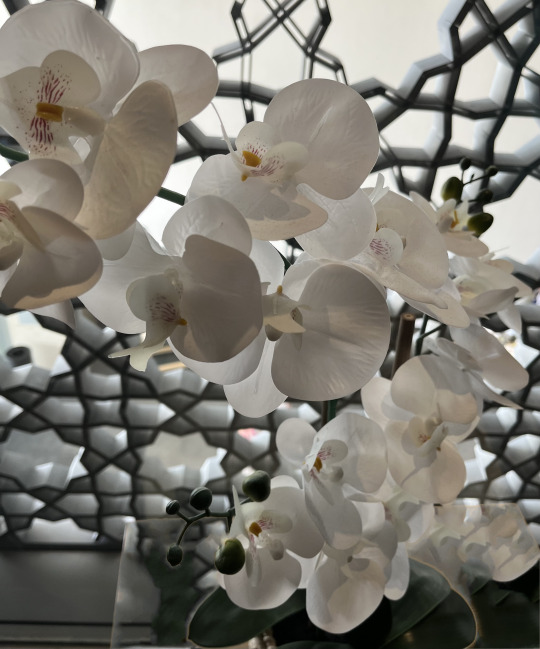

Orchids at the Aga Khan Museum and Syrian embroidery table cloth by Zeni, Cooking Up Community, 2023
In the Cooking Up Community program each senior participant brings their own unique style and visual perspective to the table. The exchange of ideas, stories, and creative expressions enriches the program, making it a bonding experience for everyone involved. With themes around food on the horizon, the future sessions of the program promise to be inspiring and fun.

Create a Legacy by Wendy, Cooking Up Community, 2023
#cooking up community#scarborough arts#inherited object#found object#value#sentimentality#lived experience#legacy#inheritance#mariammagsi#healthy arts for seniors#ontario#BIPOC
1 note
·
View note